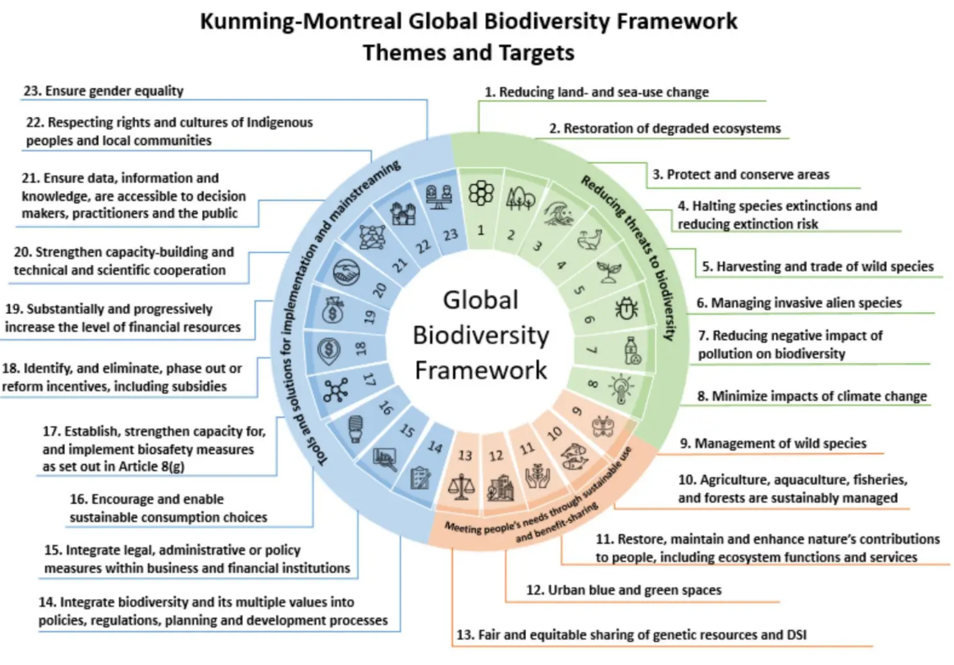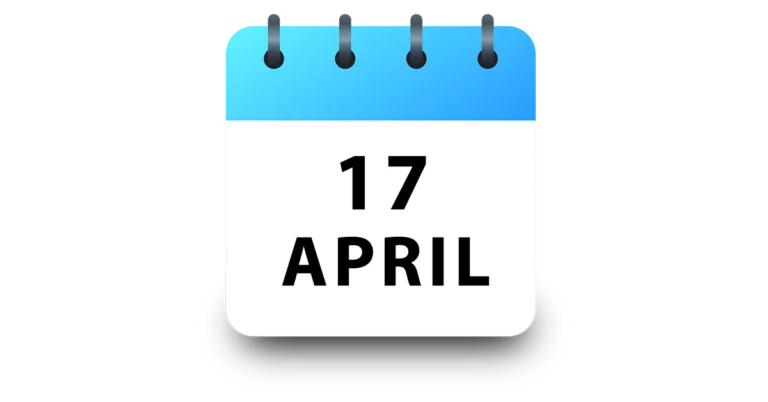22 October 2024 : Daily Current Affairs
1. India and China Reach Agreement on Patrolling in Ladakh, Easing Military Standoff
(Source: Indian Express; Section: Cover Page; Page: 01)
| Topic: GS2 – International Relations |
| Context: |
|
Analysis of News:

Background of the Standoff
- The military standoff began after Chinese incursions in eastern Ladakh in 2020, leading to heightened tensions.
- Several rounds of diplomatic and military negotiations have since taken place, with some disengagement achieved in critical areas such as Galwan Valley and Pangong Tso.
- However, legacy issues in regions like Depsang Plains and Demchok had persisted.
Key Aspects of the Agreement

- The agreement allows both sides to resume patrolling in the previously restricted areas of Depsang Plains and Demchok, where Indian troops were blocked from accessing patrol points since 2020.
- This will restore India’s ability to patrol up to points PP10-PP13 in Depsang and Charding Nullah in Demchok.
Strategic Importance of the Depsang Plains
- Depsang Plains is strategically vital due to its proximity to the Daulat Beg Oldie post and its flat terrain, which can facilitate military operations.
- By restoring access to these areas, India and China have taken a significant step towards de-escalating tensions in a sensitive zone.
Confidence-Building Measures
- The agreement includes confidence-building measures such as regular CO/Commander-level meetings to maintain coordination.
- Patrol programs will be exchanged to avoid clashes, and troop deployments along the LAC will be reduced, aligning with the Indian Army’s winter plan.
Broader Implications
- This agreement reflects diplomatic perseverance and sets the stage for improved bilateral ties, contributing to stability along the LAC.
- However, friction points like Galwan and Pangong Tso will remain buffer zones, and discussions on other sensitive areas, such as Arunachal Pradesh, are expected to continue in future dialogues.
| What can be done to manage the China-India Border Dispute? |
|
Clarification of LAC: Efforts should resume to clarify the LAC. It will avoid potential clashes in overlapping claim areas. Buffer Zones: Consider making existing buffer zones permanent and creating new ones in areas with frequent standoffs. Both sides should be willing to defend these buffer zones to their domestic audiences. Abiding by Agreements: Continue to adhere to existing bilateral agreements, including bans on firearms, and make joint public statements to reaffirm commitments. No-Patrol Zones: Establish no-patrol zones in frequently contested areas. Drones Usage: Agree on parameters for the use of drones for intelligence gathering, surveillance, and reconnaissance. Mutual Security Agreement: Attempt to reach an understanding on acceptable levels of forces, arms, and facilities near the border based on the “principle of mutual and equal security.” Impact of Third-Party Relations: Both sides should be sensitive to how their relations with third parties (e.g., US for India, Pakistan for China) might influence the other’s perceptions and actions. |
| Practice Question: Discuss the significance of the recent India-China agreement on patrolling arrangements in the Ladakh region and its implications for bilateral relations and regional stability. How does this agreement address the legacy issues along the Line of Actual Control (LAC)? (250 words/15 m) |
2. Southern States Face Aging Crisis: Leaders Urge Action Amid Fears of Political and Demographic Shifts
(Source: Indian Express; Section: Explained; Page: 13)
| Context: |
| The article addresses the growing concerns of an aging population in southern Indian states, which could impact political representation and economic stability due to declining fertility rates. |
Analysis of News:

Rising Elderly Population in the South

- Andhra Pradesh CM N Chandrababu Naidu and Tamil Nadu CM MK Stalin have expressed concerns about the rising elderly population in the southern states, as fertility rates have fallen significantly.
- According to the India Ageing Report 2023, the elderly population in states like Andhra Pradesh, Tamil Nadu, Karnataka, and Kerala will see a dramatic rise by 2036, contrasting with slower growth in northern states like Bihar and Uttar Pradesh.
- Kerala’s elderly population is projected to rise from 16.5% to 22.8%, while Tamil Nadu will see an increase from 13.7% to 20.8%.
Delimitation and Political Representation
- The aging population in southern states raises fears of losing political representation.
- As delimitation of constituencies is based on population, southern states with lower birth rates could lose parliamentary seats.
- For instance, Tamil Nadu could see its Lok Sabha seats fall from 39 to 30, while northern states might gain representation due to their higher population growth.
Impact of Lower Fertility Rates
- Southern states achieved lower fertility rates earlier than northern states, leading to an aging population.
- Andhra Pradesh’s fertility rate stands at 1.5, below the national average of 2.
- This demographic transition, though seen as progress, has left southern states with a high dependency ratio, with fewer young people to support an increasingly aging population.
Ineffectiveness of Pro-Natalist Policies
- Naidu’s suggestion to incentivize having more children mirrors failed policies seen globally.
- Pro-natalist measures in countries like Japan, China, and France have largely been ineffective, as prosperity and education tend to lead to lower birth rates.
- Experts suggest that migration and boosting economic productivity are more viable solutions than trying to reverse the aging trend through incentives.
| Practice Question: The India Ageing Report 2023 highlights significant demographic shifts in India’s southern states, with rising elderly populations and declining fertility rates. Discuss the implications of this trend on the socio-economic and political landscape of these regions, and suggest measures that can be adopted to address the challenges posed by an aging population. (250 words) (250 words/15 m) |
3. Secularism is a core part of the Constitution: SC
(Source – The Hindu, International Edition – Page No. – 4)
| Topic: GS2 – Indian Polity – Indian constitution – Significant Provisions |
| Context |
|
Secularism as Core Feature
- The Supreme Court reaffirmed that secularism is an essential and indelible part of the Basic Structure of the Indian Constitution.
- Justice Khanna highlighted that terms like “equality” and “fraternity” in the Constitution signal the importance of secularism.

Interpretation of Socialism
- The Supreme Court disagreed with the petitioners’ argument that “socialism” limits personal liberty and individualism.
- It clarified that the meaning of socialism in India differs from Western interpretations, focusing on equality of opportunity and equitable wealth distribution.
Challenge to 1976 Amendment
- A petitioner argued that while not against the terms “socialist” and “secular,” he opposed their retrospective insertion into the Preamble in 1976.
- The words were added through the 42nd Amendment during the Emergency, replacing “unity of the nation” with “unity and integrity.”
- The Kesavananda Bharati case established that the Preamble is part of the Constitution and can be amended, provided it does not alter the Basic Structure.
| 42nd Amendment |
|
Added the words “Socialist”, “Secular”, and “Integrity” to the Preamble.Transferred subjects like Education, Forests, Weights & Measures, and Protection of Wild Animals and Birds from the State List to the Concurrent List. Restricted the power of judicial review, enhancing Parliament’s supremacy over laws. Extended the term of Lok Sabha and State Legislatures from 5 to 6 years. Introduced Fundamental Duties for citizens under Part IV-A of the Constitution. Gave primacy to Directive Principles over Fundamental Rights.Made the President bound by Cabinet advice. Amended Emergency provisions. |
| PYQ: How is the Indian concept of secularism different from the western model of secularism? Discuss. (150 words/10m) (UPSC CSE (M) GS-1 2018) |
| Practice Question: Discuss the significance of secularism as a core element of the Basic Structure of the Indian Constitution. How does the inclusion of the terms “socialist” and “secular” in the Preamble influence the interpretation of the Constitution? (250 Words /15 marks) |
4. India’s Rise: A New Era of Economic Prosperity
(Source – https://pib.gov.in/PressReleseDetail.aspx?PRID=2066779®=3&lang=1 )
| Topic: GS3 – Indian Economy |
| Context |
|
India’s Economic Growth Surge
- India’s economic rise has captured global attention, positioning the country as a formidable contender on the global stage.
- The country’s GDP is projected to grow at a robust 7% in FY 2024-25, continuing its position as the fastest-growing major economy.
- India’s growth is consistently outpacing China, with the latter’s GDP projected to grow at 4.8% in 2024, slowing to 4.3% in 2025.
- This economic surge is attributed to transformative policies and reforms implemented over the past decade, laying a strong foundation for sustained growth.
Important Government Initiatives And Their Success
| Scheme/Policy | Objective | Key Features | Achievements |
| Digital India | Transform India into a digitally empowered society. | Focus on digital infrastructure, digital literacy, and e-governance. | Launched in 2015; significant increase in internet penetration. |
| Startup India | Promote entrepreneurship and innovation. | Funding support, tax exemptions, and easier compliance for startups. | Over 151,000 recognized startups; created 15.5 lakh direct jobs. |
| Pradhan Mantri Jan Dhan Yojana | Financial inclusion for unbanked individuals. | Zero-balance bank accounts, overdraft facilities, and insurance cover. | Over 53 crore bank accounts opened since 2014. |
| Pradhan Mantri Awas Yojana (PMAY-U) | Provide affordable housing for urban poor. | Subsidies for housing loans, construction of affordable housing units. | Over 1.18 crore houses sanctioned, with more than 87.25 lakh constructed. |
| Ayushman Bharat | Provide healthcare coverage to vulnerable populations. | Health insurance coverage of up to ₹5 lakh per family per year for secondary and tertiary care. | Over 35.6 crore Ayushman Cards issued. |
| Unified Payments Interface (UPI) | Facilitate digital transactions. | Instant transfer of money between bank accounts via mobile devices. | Transactions grew from 92 crore in FY 2017-18 to over 13,116 crore in FY 2023-24. |
| CoWIN | Support vaccination efforts during the COVID-19 pandemic. | Digital platform for registration, scheduling, and monitoring vaccination. | Enabled the administration of over 220 crore vaccine doses. |
| Skill India Mission | Enhance the employability of youth. | Skill development programs across various sectors. | Trained over 1 crore individuals since its launch in 2015. |
| Make in India | Promote manufacturing and attract investments. | Initiatives to ease doing business, encourage innovation, and boost local manufacturing. | Attracted significant foreign direct investment (FDI) in various sectors. |
| Pradhan Mantri Kisan Samman Nidhi (PM-KISAN) | Provide direct income support to farmers. | ₹6,000 per year to eligible farmer families in three installments. | Over ₹1.75 lakh crore transferred to farmers since its launch in 2019. |
India’s Long-Term Growth Potential
- This comprehensive development strategy positions India as a future global economic powerhouse capable of surpassing major competitors in the coming decades.
| PYQ: Do you agree with the view that steady GDP growth and low inflation have left the Indian economy in good shape? Give reasons in support of your arguments. (150 words/10m) (UPSC CSE (M) GS-3 2019) |
| Practice Question: Discuss how initiatives like Digital India and Startup India have contributed to India’s economic growth. Analyse their role in fostering innovation, financial inclusion, and long-term economic resilience. (250 Words /15 marks) |
PRELIMS FACTS
1. Militants Attack Workers at Z-Morh Tunnel Project in J&K, Killing Seven
(Source: Indian Express; Section: Explained; Page: 14)
| Context: |
|
Analysis of News:
Z-Morh Tunnel and Its Strategic Importance

What is the Z-Morh Tunnel?
- The Z-Morh tunnel is a 6.4 km long tunnel connecting Kangan town to Sonmarg in Ganderbal district. It is part of a larger infrastructure project aimed at providing all-weather connectivity between Srinagar and Leh.
- Located near Gagangir village, the tunnel bypasses a dangerous Z-shaped stretch of road, frequently shut down during winters due to snowfall and avalanches.
Strategic Importance
- The Z-Morh tunnel is crucial for maintaining year-round connectivity on the Srinagar-Leh highway, one of only two roads linking Ladakh with the rest of India.
- It is part of the larger Zojila tunnel project, which will connect Sonmarg to Drass in Ladakh, ensuring the seamless movement of troops and supplies.
- This is especially vital given India’s strategic military deployments against both Pakistan and China in the region, including the Siachen Glacier and Eastern Ladakh.
Project Timeline
Project Initiation and Status
- Originally conceived by the Border Roads Organisation (BRO) in 2012, the project faced delays before being taken over by the National Highways & Infrastructure Development Corporation Limited (NHIDCL).
- APCO Infratech now leads the construction, with a soft opening in February 2023. Full completion is expected soon, with the Zojila tunnel, part of the larger project, slated for completion by December 2026.
2. C. Elegans: The Tiny Worm Behind Four Nobel Prizes in Scientific Discovery
(Source: Indian Express; Section: Explained; Page: 13)
| Context: |
|
Analysis of News:

About Caenorhabditis elegans:
- It is a nematode worm which is a small, relatively simple, and precisely structured organism.
- C. elegans grows within 3-5 days from a fertilised egg to a millimetre-long adult, and it has informed profound insights into the human body, as well as biology.
- It is widely used in research to understand neuronal and molecular biology.
- It was the first multicellular organism to have its full genome sequenced and neural wiring mapped.
- It has two sexes—a hermaphrodite and a male.
- The hermaphrodite can be viewed most simply as a female that produces a limited number of sperm: she can reproduce either by self-fertilization, using her own sperm, or by cross-fertilization after transfer of male sperm by mating.
- Self-fertilization allows a single heterozygous worm to produce homozygous progeny.
What are Nematodes?
- Nematodes are among the most abundant animals on Earth.
- They occur as parasites in animals and plants or as free-living forms in soil, fresh water, marine environments, and even such unusual places as vinegar, beer malts, and water-filled cracks deep within Earth’s crust.
- Features:
- These are bilaterally symmetrical, elongate, and usually tapered at both ends.
- Some species possess a pseudocoel, a fluid-filled body cavity between the digestive tract and the body wall.
- They have been reported from every continent on earth and occur in deserts, swamps, the oceans, the tropics and Antarctica.
- Nematode parasites of animals occur in almost all organs of the body, but the most common sites are in the alimentary, circulatory, and respiratory systems.
Simplified Model for Complex Biology
- Caenorhabditis elegans is favored by scientists due to its simplicity. With only 959 cells, its entire developmental process can be mapped from fertilization to death, offering an easy-to-study model for fundamental biological processes.
- Its genome was fully sequenced in 1998, and the worm’s short life cycle and transparent body make it an “experimental dream” for researchers.
Experimental Virtue and Self-Sufficiency
- The worm’s manageable size, inexpensive upkeep, and unique ability to reproduce independently make it an ideal model organism.
- Female C. elegans are capable of self-insemination, further enhancing their utility in controlled experiments.
3. India Allocates Satellite Communication Spectrum Administratively, Favoring Equity Over Auctions
(Source: Indian Express; Section: Explained; Page: 13)
| Context: |
|
Analysis of News:
What is Airwaves/Spectrum?

- Airwaves are radio frequencies within the electromagnetic spectrum that can carry information wirelessly for a range of services including telecommunications.
- The government manages and allocates airwaves to companies or sectors for their use.
- The government auctions a fixed amount of spectrum within specified band/s to be utilised by operators for providing communication services to consumers.
What is Satellite spectrum?
- Satellite spectrum refers to the range of radio frequencies used by satellites to communicate with ground stations, other satellites, and various devices on Earth.
- These frequencies are part of the electromagnetic spectrum, specifically the radio waves, and are allocated for different satellite services, such as communication, broadcasting, navigation, and Earth observation.
International Nature of Satellite Spectrum
- Unlike terrestrial spectrum, satellite spectrum has no national boundaries and is managed by the International Telecommunication Union (ITU).
- Due to its international character, auctioning it within one country is impractical.
Legal Framework for Satcom Spectrum
- According to the Telecommunications Act, 2023, spectrum for Satcom falls under a specific category where it is assigned through an administrative process rather than auction.
- This process aligns with international norms and avoids complications that arise from auctioning shared spectrum.
Advantages of Satcom
Wider Coverage and Resilience
- Satcom services, using satellites in orbit, provide connectivity without the need for physical infrastructure like cables or fiber optics.
- They can reach remote, rural, and disaster-prone areas that ground-based communication networks cannot access.
Resilience in Extreme Conditions
- Satellite networks are more resilient in the face of natural disasters because they have fewer ground-based components that can be damaged.
Growing Satcom Sector
- India’s satcom sector is projected to grow from $2.3 billion annually to $20 billion by 2028, offering significant investment opportunities, especially in rural broadband connectivity.
Auction vs. Allocation Debate
Key Differences
- While terrestrial spectrum is exclusive to specific operators in a region, satellite spectrum is shared among multiple operators.
- Therefore, administrative allocation is more practical for Satcom, as auctions could lead to inefficiencies.
Global Precedents
- Countries like the US, Brazil, and Saudi Arabia have experimented with auctioning satellite spectrum but later reverted to administrative allocation, finding it more feasible for non-exclusive services like Satcom.
4. World lags on 2030 nature goals as COP16 talks begin
(Source – The Hindu, International Edition – Page No. – 7)
| Context |
|
Analysis of the news:

- In 2022, the Kunming-Montreal Global Biodiversity Framework was established to halt nature destruction by 2030.
- By 2024, countries are falling behind on their biodiversity goals.
- COP16, a U.N. biodiversity summit in Cali, Colombia, brings together nearly 200 nations under pressure to meet their commitments.
- A key issue is securing funding for conservation, with new revenue-generating initiatives being explored.
- Only 31 of 195 countries submitted National Biodiversity Strategies and Action Plans (NBSAPs) by October 2024.
- Richer nations filed more plans, while poorer countries face funding and expertise challenges.
- The summit’s aim is to re-energize global efforts and address delayed biodiversity plan
5. As poor nations’ default wave peaks, cash shortage could take its place
(Source – The Hindu, International Edition – Page No. – 13)
| Context |
|
Observations by the IMF:
- The post-COVID wave of sovereign defaults has peaked, with countries like Ghana, Sri Lanka, and Zambia concluding debt restructurings.
- The IMF is concerned about a liquidity shortfall in emerging economies, hindering development, climate change mitigation, and increasing distrust in governments and Western institutions.
- Debt servicing costs have risen, borrowing has become more expensive, and external financing is less reliable.
- Many countries are cutting essential expenditures like education, health, and infrastructure to service debts.
- In 2022, 26 countries, including Angola, Brazil, Nigeria, and Pakistan, paid more to service external debts than they received in new finance.
- Rising global interest rates have made affordable refinancing difficult for countries with maturing debts.
- The IMF and World Bank are increasing efforts to boost lending, with the World Bank aiming to raise its lending capacity by $30 billion over 10 years.
- Despite market access reopening for some countries, borrowing costs remain high, with nations like Kenya borrowing at unsustainable rates above 10%.

